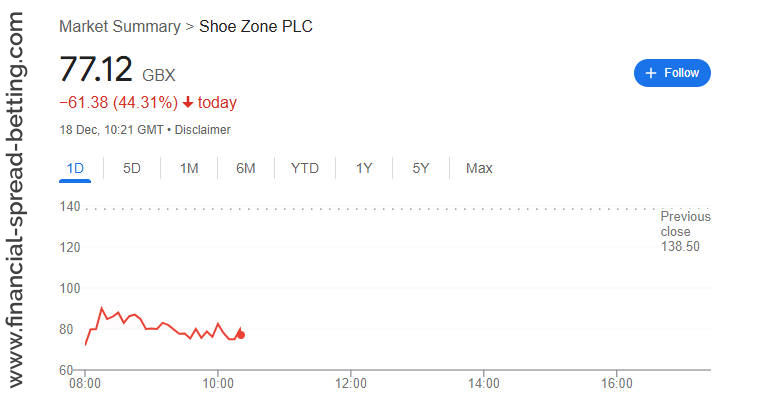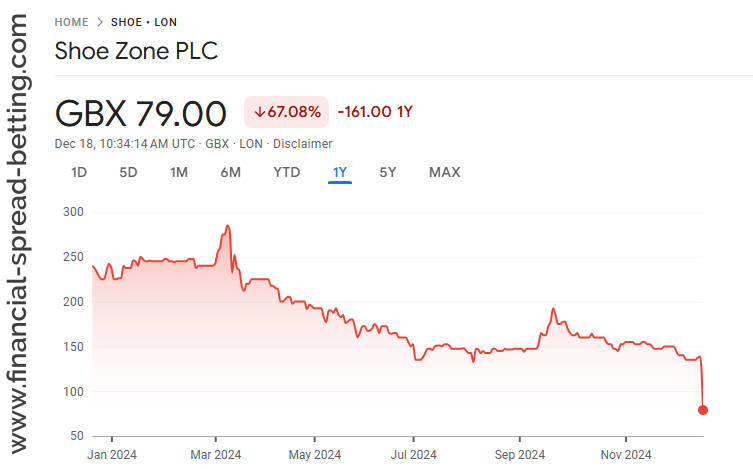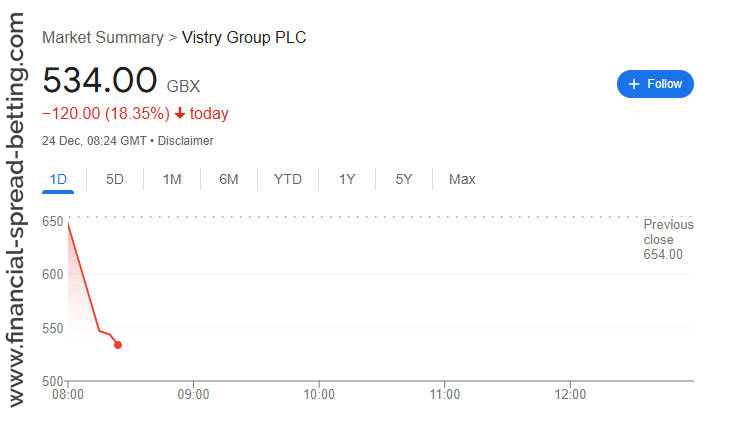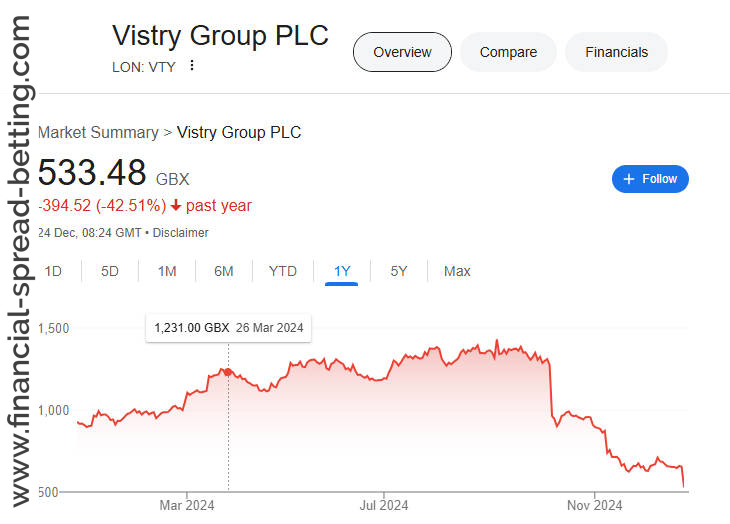One of the most challenging aspects of investing is knowing when to sell. While buying shares is often driven by research, optimism, or enthusiasm, selling requires a clear and disciplined strategy, especially when faced with bad news. The tactic of selling at the first hint of a profit warning has proven effective for many seasoned investors. This lesson explores why this approach works, its psychological and financial benefits, and how to apply it in practice.
The Nature of Profit Warnings
Profit warnings are announcements by companies indicating that their financial results will fall below expectations. These warnings are usually precursors to deeper problems, as the underlying issues often take time to resolve and may not be fully transparent when the warning is issued.
Research and anecdotal evidence suggest that a single profit warning is often followed by additional warnings. Companies rarely recover immediately after disappointing the market, as it may take months or even years to address the root causes of the decline.
Example: Shoe Zone (LON:SHOE)
Shoe Zone released a trading update today at the time of writing this article (18th December 2024)
‘Shoe Zone announces that for the first two months of its financial year and the first half of December, it has experienced very challenging trading conditions, principally a weakening of consumer confidence and unseasonal weather, both of which have decreased revenue and profit.
Consumer confidence has weakened further following the Government’s budget in October 2024, and as a result of this budget, the Company will also incur significant additional costs due to the increases in National Insurance and the National Living Wage. These additional costs have resulted in the planned closure of a number of stores that have now become unviable. The combination of the above will have a significant impact on our full year figures.’
The stock opened 40% down!
In March, Shoe Zone issued its first profit warning, citing four specific challenges:
- Increased National Living Wage costs,
- Higher container costs due to supply chain disruptions,
- Increased expenses related to property upgrades,
- Weaker-than-expected sales for the Autumn/Winter season.
These issues, while presented as manageable, reflected a broader trend of rising costs and weak trading performance. Investors who sold at £2.60, when the warning was first issued, avoided the subsequent slide to 80p – a drop of over 65%.
SELL on the first hints of bad news ahead and certainly even on what looks a mild profits warning. If using that tactic with Shoe Zone (LON:SHOE) investors would have sold in March on the day of their first profits warning. Far better selling then around £2.60 than still to be holding today at just 80p? The share needs to triple now to get back to the price when SHOE investors had such an obvious chance to escape (possibly still at a profit then) at 260p. Using this simple sell tactic works far more often than not.
Far better to sell and look for alternatives and sometimes with a record of ‘better than expected’ updates? Again seems obvious surely? Likely to do better than a share sold on the first profits warning still being held even after several profits warnings?
Example 2: Vistry Group (LON:VTY)
Vistry Group PLC issued a trading update on the 24th December 2024 which happened to be their third third profit warning today… The skeptic in me suspects that any company opting to issue a profit warning on Christmas Eve might be hoping that fewer investors will notice. However, since this marks the third profit warning from housebuilder Vistry (LON:VTY) since September 2024, it might simply be a case of the management running out of dates to disclose its ongoing flow of bad news.
- Earnings Downgrade:
- The Group now expects adjusted profit before tax for FY24 to be around £250m, down from the previous guidance of £300m. This represents a 16.7% reduction in expectations.
- Primary Reasons for the Downgrade:
- Delays in transactions and completions: A significant number of agreements expected in FY24 are now anticipated to finalize in FY25.
- Rejection of unattractive deals: The Group consciously chose not to proceed with certain transactions due to unfavorable commercial terms, opting for better prospects in FY25.
- Open market completion delays: This also contributed to the decline, albeit to a lesser extent.
- Financial Impact:
- The delays have resulted in higher-than-expected net debt at the year’s end, projected to be around £200m.
- Positive Indicators:
- Strong demand from partners in Q4.
- Completion of over 70 Partner Funded transactions with 35 partners, suggesting resilience in this segment.
- Management’s Focus:
- Rebuilding profitability in FY25.
- Continued commitment to the partnership housing strategy.
There we go profit warning number 3 is in. This sets the base for 2025 but clearly poor deals were being signed and CFO and CEO dumped this news on Christmas Eve, their inept control processes led to the mess. This is just giving them room for 2025, cynical.
Why This Is a Classic Example of Selling on the First Profit Warning
Vistry’s situation underscores the risks associated with holding onto a stock after a profit warning:
- Signaling Future Uncertainty:
- Delays in completions and income signal operational and market challenges, potentially indicative of systemic issues rather than one-off delays.
- Revisions to profit guidance may not end with this announcement; further downgrades are possible if economic conditions or execution challenges persist.
- Cash Flow and Debt Concerns:
- Net debt of £200m indicates a deterioration in financial health, which could lead to further strain if market conditions worsen.
- Investor Sentiment:
- Profit warnings often erode confidence in management’s ability to deliver on guidance, leading to sharp declines in share price.
- Reputation Risks:
- Frequent delays and an inability to meet targets can tarnish the company’s reputation among partners and investors.
Delayed agreements, delayed completions, and slim pickings in the pipeline are to blame. Not management, then. Effect on current year another 17% drop from 300m to 250m. No mention of effect on next year.
The CEO/Chairman was recently seen congratulating himself in an interview with The Times, accompanied by a well-staged photograph. Yet, less than four months later, he has overseen three major profit warnings, with the company’s shares plummeting by nearly 60%. It’s astonishing that he retains any credibility whatsoever.
The timing of significant directors’ share purchases following the first profit warning—just days after the alleged discovery of accounting, costing, and pricing errors—only adds insult to injury. This move strikes me as one of the most arrogant and embarrassing displays by a CEO who seems utterly disconnected from the realities of his own business.
The notion that anyone but the company itself is to blame for its woes during this time is nothing short of laughable!
Vistry investors could have sold around £9 in October on the day of that first warning. Now the Vistry (LON:VTY) share price has fallen so far those who sold but perhaps now believe the outlook looks better , or the share looks oversold, or whatever, can consider buying back again. Isn’t that far better than holding on after both the first and second warnings and now wondering whether to average down after putting up with (an unnecessary?) 40% loss since that first profits warning.
Separately, money has been wasted buying back their shares ahead of this latest profits warning and share price fall. Buybacks should only be done when the shares are obviously cheap. Next (LON:NXT) is a good example of a user of that sensible tactic.
Why Selling Early Works
- Preservation of Capital: Selling early protects your investment from further losses, freeing capital to invest elsewhere. This is especially critical in volatile markets where opportunities abound.
- Psychological Relief: Holding onto a declining stock can be emotionally taxing. By selling early, you eliminate the stress and second-guessing that often accompany falling shares.
- Probabilities Favor Selling: Historical data supports the idea that profit warnings are often the start of a downward spiral. Research by Stockopedia found that companies issuing one profit warning often issue two more within the same year.
The Risks of Holding On
Investors often justify holding onto a declining stock, hoping for a rebound. This strategy, however, can lead to significant opportunity costs:
- Capital Lock-Up: Money tied up in a losing investment is money that could be growing elsewhere.
- Compounding Issues: Problems such as rising costs, supply chain disruptions, or competitive pressures rarely resolve quickly, meaning further declines are likely.
- Emotional Bias: Hope and optimism can cloud judgment, preventing rational decisions and leading to greater losses.
Applying the Strategy in Practice
- Set Clear Rules: Decide in advance to sell at the first profit warning, regardless of how minor it seems. This removes emotional decision-making.
- Monitor Updates Closely: Keep track of company news and reports. Even subtle hints of trouble—such as weaker-than-expected guidance—should prompt action.
- Diversify Your Portfolio: Avoid becoming too attached to any single investment. Diversification allows you to move on quickly without major disruptions to your overall portfolio.
Counterarguments and Exceptions
While selling early is a sound strategy, there are rare cases where holding on may be justified:
- Temporary or External Issues: If the profit warning is due to short-term or external factors (e.g., a one-off event like a natural disaster), the company may recover quickly.
- Strong Fundamentals: Companies with robust financial health, a history of resilience, and strong management may bounce back faster than expected.
- Industry Trends: Sometimes, macroeconomic or sector-wide trends affect an entire industry. In such cases, the decline may represent an opportunity to buy undervalued shares.
Conclusion
Selling on the first profit warning is a disciplined and effective approach for preserving your capital and avoiding long term pain. While it may seem counter-intuitive to sell at the first sign of trouble, the evidence overwhelmingly supports this investing strategy. By recognizing profit warnings as red flags, investors can avoid the emotional traps of hope and optimism, focusing instead on stronger opportunities in the market.
As the Shoe Zone example illustrates, selling at £2.60 instead of holding to 80p is not just about minimizing losses – it’s about maximizing potential elsewhere. In the end, the key to successful investing lies not just in choosing what to buy, but in knowing when to let go.





